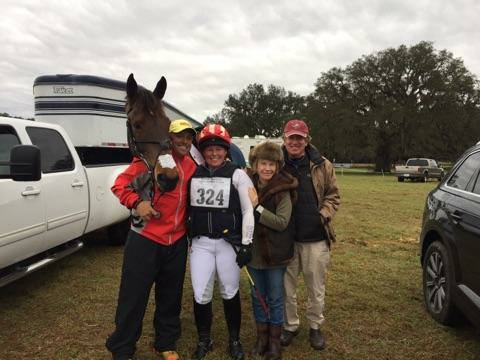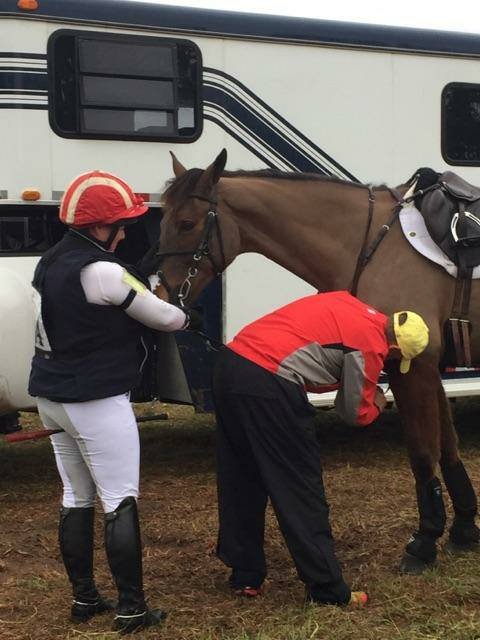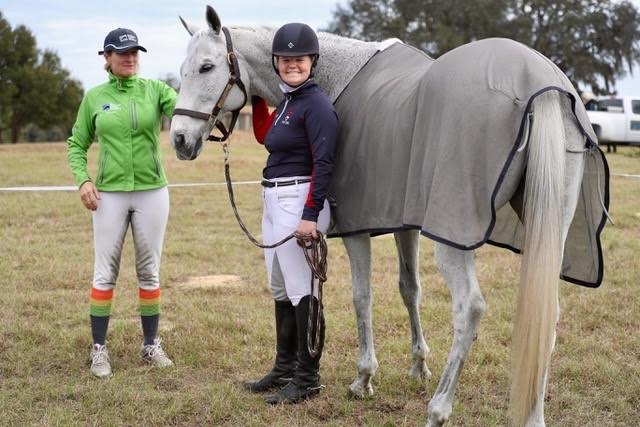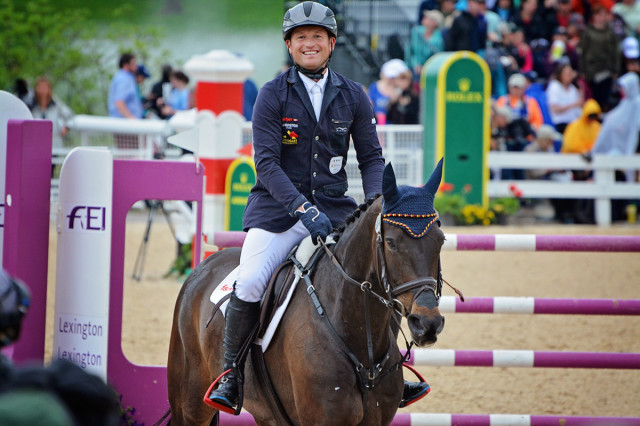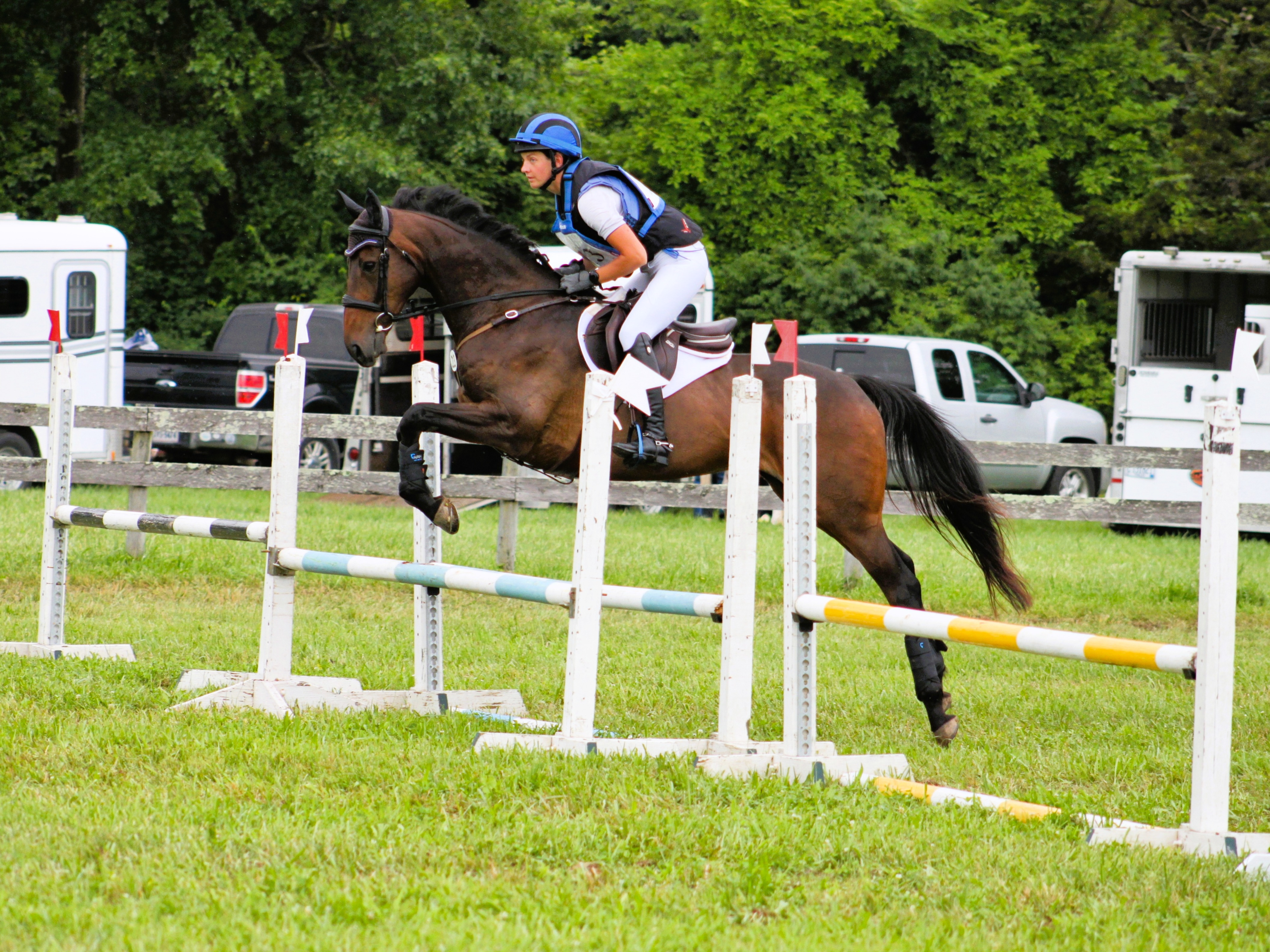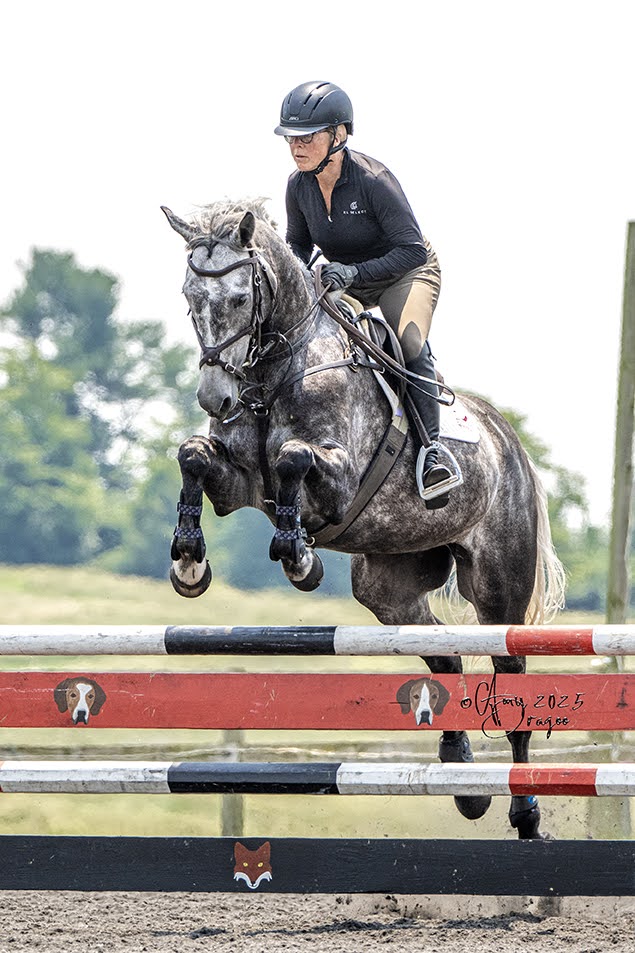What’s in Your Ring? is an EN series sponsored by Attwood Equestrian Surfaces in which riders share their favorite jumping exercises. It’s easy to get stuck in a training rut, and we hope this will inspire you with fresh ideas that you can take home and incorporate into your own programs.
This week’s edition comes from Courtney Cooper of C Square Farm in Nottingham, Pa. Courtney made her four-star debut at Rolex 2016 aboard her homebred Irish Sport Horse Who’s a Star, who kindly demonstrates today’s featured exercise in the video below. Courtney is off to a super start in 2017, with one blue ribbon already procured at Stable View Aiken Opener H.T., and we wish her continued success this year!

To start off our jump lesson with what we have in our ring, we have four cavellettis set on an arc of a circle about 10′ from the middle of each and we warm up the horses by bouncing them through and asking them to get round over their backs. Ideally you are looking for the horse to be almost too round so they round up over their backs; also the riders should be up out of the saddle and keeping their bodies poised and out of the saddle.
After warming up over the cavellettis we have a vertical and an oxer set parallel to the long side of the arena. We start by going over the vertical with a long straight approach making sure we land straight and then bend through the turn. When jumping the vertical you want to make sure to turn only your head and not twist your body to give the horse the sense of the new direction
Once the vertical is going smoothly we add the oxer and go off the left lead to the vertical then off the right lead to the oxer and then a full left circle back to the oxer and then we go right back to the vertical. This helps set the stage for smooth turns, and both horse and rider staying straight. At this point in the year we want very good equitation and long approaches to work on straightness and consistency.
After horse and rider are warmed up we will put together a simple course with five fences strung together to work on continuing the bending and straightness.
Starting off the left lead to the vertical turn right to the oxer, land right and go down the diagonal to the vertical after the in and out and then turn back left to the vertical to vertical in and out. The idea is to practice what we have warmed up doing, straightness, good position and continuing a quality canter through the turns.
Once we feel that course is good, we will finish with a more difficult course with different turns: the vertical headed back the other way off the left lead and then turn right and jump the vertical landing between the in and out, then the rider will continue to a vertical with a bending six strides to the in and out. The first bending line allows them to start to judge their horse’s canter and what kind of jump they jumped in on to determine how far out they want to bend or if they want to bring the line back straighter after landing.
After the in and out they will flow around to the right and then jump a new vertical and do a 90 degree turn, using the outside aids to bend the horse around to the original pink vertical — again they will have the option based on how they jump in and the quality of the canter to determine exactly where to make the turn and then they will land going to the left and make a 180 degree turn back to the oxer. All the while I look for straightness through the rider’s position, appropriate bend through the horse’s body and a good quality canter.
With more educated riders I expect them to start landing on the leads of the turns by looking in the new direction and opening the inside rein without letting the haunches swing out.
We have found this to be a very beneficial exercise to the start of the season for both young and old horses and riders.
Courtney demonstrating the exercise on Who’s a Star:
Many thanks to Courtney for sharing! Do you have an exercise to share or is there an eventer you would like to nominate for the “What’s in Your Ring?” series? Email [email protected].
Good Footing – Attwood Equestrian Surfaces from Bold Horse Media on Vimeo.






